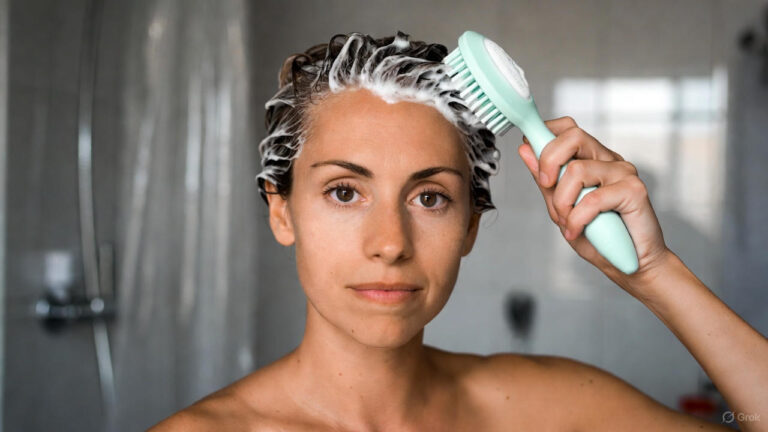Hair loss can be a distressing experience, but understanding the different types and their causes is the first step toward finding the right treatment. Hair loss affects millions of people globally and can occur due to various reasons, including genetics, medical conditions, or lifestyle factors. This article explores the most common types of hair loss and the effective ways to manage and treat them.
Types of Hair Loss
1. Androgenetic Alopecia (Male and Female Pattern Baldness)
Androgenetic alopecia, commonly known as male or female pattern baldness, is the most prevalent form of hair loss. It is primarily caused by genetics and hormonal changes, particularly the effects of dihydrotestosterone (DHT), a byproduct of testosterone. In men, hair loss usually starts at the temples and crown, forming a characteristic “M” shape. Women experience thinning along the top of the scalp, but it’s less likely to result in complete baldness.
Treatment Options:
- Minoxidil: Available over-the-counter, this topical treatment helps stimulate hair growth and slow down hair loss.
- Finasteride: An oral medication used by men to reduce DHT levels, preventing further hair loss.
- Low-Level Laser Therapy (LLLT): A non-invasive treatment that stimulates hair follicles, promoting regrowth.
- Hair Transplant Surgery: A surgical option that transplants hair follicles from one part of the scalp to thinning or bald areas.
2. Telogen Effluvium
Telogen effluvium occurs when a large number of hair follicles enter the resting phase (telogen) of the hair growth cycle prematurely. This type of hair loss is typically temporary and can be triggered by stress, illness, childbirth, drastic weight loss, or major surgery. The hair usually sheds evenly across the scalp, resulting in noticeable thinning rather than bald patches.
Treatment Options:
- Stress Management: Reducing stress levels through relaxation techniques like yoga or meditation can help manage hair shedding.
- Nutritional Supplements: Vitamins like biotin, iron, and zinc can support hair health if the hair loss is due to nutritional deficiencies.
- Patience and Time: In most cases, hair regrowth occurs naturally once the underlying cause is addressed.
3. Alopecia Areata
Alopecia areata is an autoimmune condition where the immune system mistakenly attacks hair follicles, resulting in round patches of hair loss on the scalp or other areas of the body. In severe cases, it can progress to alopecia totalis (total scalp hair loss) or alopecia universalis (complete body hair loss). While the cause of alopecia areata is not fully understood, genetics and environmental factors are believed to play a role.
Treatment Options:
- Corticosteroid Injections: These are administered by dermatologists to reduce inflammation and stimulate hair regrowth.
- Topical Immunotherapy: Chemicals like diphencyprone (DPCP) are applied to the scalp to trigger an immune response that encourages hair growth.
- Minoxidil: It can also be used to promote hair regrowth, especially in mild cases.
4. Traction Alopecia
Traction alopecia is caused by prolonged tension on the hair, often due to tight hairstyles like ponytails, braids, or hair extensions. This constant pulling can damage hair follicles, leading to hair thinning or bald spots, particularly around the hairline and temples. If caught early, traction alopecia can be reversed by changing hairstyles, but long-term damage may result in permanent hair loss.
Treatment Options:
- Change in Hairstyle: Avoiding tight hairstyles and giving the hair a break from tension can allow the follicles to recover.
- Minoxidil: It can be used to help regrow hair in areas affected by traction alopecia.
- Hair Transplant Surgery: If hair follicles are permanently damaged, a hair transplant may be considered.
5. Anagen Effluvium
Anagen effluvium is a rapid form of hair loss that occurs during the anagen (growth) phase of the hair cycle. It’s commonly associated with chemotherapy or radiation treatments, as these therapies can target rapidly dividing cells, including those in hair follicles. Unlike telogen effluvium, anagen effluvium results in more sudden and extensive hair loss, often including the eyebrows, eyelashes, and body hair.
Treatment Options:
- Scalp Cooling Caps: These caps, used during chemotherapy, may reduce hair loss by cooling the scalp and slowing hair follicle activity.
- Topical Minoxidil: Applying minoxidil can help speed up hair regrowth after chemotherapy.
- Wigs and Headscarves: Many individuals opt to wear hair wigs or headscarves while waiting for their hair to regrow.
6. Scarring Alopecia (Cicatricial Alopecia)
Scarring alopecia refers to a group of conditions that destroy hair follicles and replace them with scar tissue, leading to permanent hair loss. This type of hair loss can occur due to inflammation from autoimmune diseases, infections, or severe injuries to the scalp. Early detection is crucial to prevent irreversible damage.
Treatment Options:
- Anti-Inflammatory Medications: Corticosteroids and other medications can reduce inflammation and prevent further scarring.
- Surgery: In some cases, hair transplant surgery may be an option to restore hair in areas where the follicles have been destroyed.
- Topical Treatments: Prescription creams or gels can help manage inflammation and prevent the spread of hair loss.
Conclusion
Understanding the type of hair loss you’re experiencing is key to finding the right treatment. While some types of hair loss are temporary and treatable with lifestyle changes, others may require medical intervention. If you’re concerned about hair loss, consult a dermatologist or healthcare provider to determine the best treatment plan for your specific condition.
FAQs
1. How can I tell what type of hair loss I have?
A dermatologist can examine your scalp and hair, perform blood tests, or recommend a scalp biopsy to determine the type of hair loss you’re experiencing.
2. Can stress really cause hair loss?
Yes, stress is a common trigger for telogen effluvium, a temporary type of hair loss that typically resolves once the stressor is managed.
3. Is hair loss from chemotherapy permanent?
Hair loss from chemotherapy (anagen effluvium) is usually temporary. Hair typically regrows after treatment ends, although the texture or color may change.
4. Can I prevent traction alopecia?
Yes, you can prevent traction alopecia by avoiding tight hairstyles that pull on the hair and cause stress to the hair follicles.
5. Will minoxidil work for all types of hair loss?
Minoxidil is effective for many types of hair loss, particularly androgenetic alopecia. However, its effectiveness may vary for conditions like alopecia areata or scarring alopecia.
6. Can diet affect hair loss?
Yes, a poor diet lacking essential nutrients like iron, zinc, and biotin can contribute to hair loss. A balanced diet can help promote healthy hair growth.
7. Is hair transplant surgery a permanent solution?
Hair transplant surgery can offer long-lasting results, but the success depends on the type of hair loss and the condition of the donor hair.
8. Can alopecia areata be cured?
There is no cure for alopecia areata, but treatments like corticosteroid injections and topical immunotherapy can help stimulate hair regrowth.
9. How soon can I expect results from hair loss treatments?
Results vary depending on the treatment. Minoxidil can take 4-6 months for noticeable hair regrowth, while other treatments, like corticosteroid injections, may show results sooner.
10. Should I consult a doctor if I notice hair loss?
Yes, if you notice unusual or sudden hair loss, it’s important to consult a dermatologist or healthcare professional to diagnose the cause and determine appropriate treatment.



